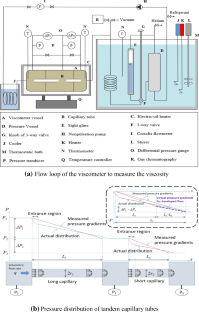
Maple syrup, a very viscous fluid, would pour slower than when you pour milk on your cereal as milk's viscosity is much lower. Imagine dripping maple syrup on your waffles for your breakfast. The higher the viscosity of a fluid (liquid or gas), the slower it traverses across a surface. The design and maintenance of hydraulic systems require a sound understanding of viscosity for example.Viscosity is the measure of a fluid's resistance to flow. The viscosity of water at 20 oC has become the standard measure of viscosity, to which most other fluids, especially liquids, are compared.Įxperimentation which has led to a good understanding of viscosity helps in many industries. This value was arrived at through careful, repeated experimentation using the capillary method, manometers and viscometers. The viscosity of 0.00102 poise or 1.002 mPa.s at 20 oC is the standard measurement that acts as a benchmark for experimentation with fluids. The main use for values of the viscosity of water is in comparison with other fluids. That’s why graphs and tables of water viscosity are readily available. water, it’s easy to accurately determine the viscosities of others. Once the viscosity of one liquid is known at various temperatures, i.e. Ice still flows, but at a much slower rate than warm water. Once it drops to 0 oC and starts to freeze, it is clear that the viscosity is much higher. However, the strength of these bonds increase as water gets colder. Water has a low viscosity due to the low inter-molecular bonds. Body temperature (37 oC) is another commonly used viscosity measure. As mentioned earlier, the SI unit of absolute viscosity is Poiseuille, which relates to the viscosity of water at 20 oC. The viscosity of water at 20 oC is commonly used as a primary standard. It is also important in biology as the viscosity of water is a crucial factor in blood circulation. As mentioned earlier the viscosity of liquids decrease as temperature rises, so it is often used at a raised temperature in industrial processes to improve viscosity. In fact, the reason it makes such a good solvent is that it has relatively low viscosity. One reason that the viscosity of water is an important measurement is due to water being used widely in industry, engineering, agriculture and as a solvent in chemical production. It is the most abundant liquid on Earth, covering 71% of the Earth’s surface. Water is a liquid, and each molecule contains one oxygen atom and two hydrogen atoms (H 2O). To put it simply, when heated, liquids will flow more easily, and gases will flow more slowly. Gas viscosity increases as temperature increases.

Liquid viscosity decreases quickly as temperature increases. Viscosity changes with temperature in different ways depending on whether the fluid is a liquid or gas. The units of dynamic viscosity are Ns/m 2 (Ns m -2), or mPa.s, or the SI unit Poiseuille (where 1 centi-Poiseuille = 1 mPa.s for water at 20 oC).įluids that produce a viscosity constant are known as Newtonian fluids.įluids that don’t produce a constant are called Non-Newtonian fluids.Ī different type of viscosity measure that is useful for some applications is kinematic viscosity which is calculated by dividing the dynamic viscosity by density and is measured in m 2/s (m 2s -1). The calculated constant for the fluid is known as the absolute or dynamic viscosity.ĭynamic viscosity = (Force x Time) / Area In many fluids, there is proportionality between the shearing stress that creates flow and the rate of deformation (or shear strain).Īnother way to look at this is that when you divide the shear stress by rate of deformation, you get a constant value for a certain fluid held at a specific temperature. It is also important when assessing and controlling liquid flow in industrial processes such as injection moulding and spraying. Viscosity is commonly used to assess lubrication in mechanical systems and to determine the opposition forces that arise when transporting fluids in pipelines. A simple comparison between the flow of water (low viscosity) and honey (high viscosity) can help to illustrate the principle.


 0 kommentar(er)
0 kommentar(er)
